Silicon, aluminum, and zinc offer high corrosion resistance in Zincalume steel. Read our information below about the benefits of Zincalume steel to your building and construction needs.
What is Zincalume Steel?
Zincalume steel is a type of steel that has a coating made of a combination of aluminum, zinc, and silicon. This coating is applied to the steel in a continuous hot-dip process, which results in a highly corrosion-resistant and durable material.
Zincalume steel coil is commonly used in construction for roofing, walling, and fencing applications. It is highly valued for its superior corrosion resistance as well as its ability to withstand extreme weather conditions.
Additionally, zinc-plated steel is lightweight, easy to handle and install, and has a long lifespan. Overall, zinc is a popular and versatile material that is used in a wide range of industries for its strength, durability, and resistance to corrosion.
The development of Zincalume began in 1976 to serve the building needs of customers in Australia. After 20 years, it has leveled up by introducing Zincalume® steel with Activate® technology.
It underwent several tests at BlueScope’s production facilities in New South Wales, Australia. The technology adheres to the AS/NZS 1365:1996 (R2016) and AS 1397:2021 Australian Standards. The BlueScope warranties ensure that the steel can last for years with less maintenance.
AM vs. AZ
Zincalume® aluminum/zinc/magnesium alloy coated steel, also known as AM, uses patented Activate® technology.
AM offers good performance due to the changes in composition as well as its coating structure to withstand harsh environments. It is composed of 55 percent aluminum, 2 percent magnesium, 1.5 percent silicon, and a balance of zinc.
AM is more resilient and long-lasting compared to Zincalume® aluminum/zinc alloy coated steel (AZ). AZ was developed by BlueScope in 1976 by coating the steel with 55 percent aluminum, 1.5 percent silicon, and a balance of zinc.
Source: https://cdn.dcs.bluescope.com.au/download/ctb-06
Coating Structure
To give you a clear picture of the coating structure of Zincalume steel, take a look at the two figures below. Figure 1a shows the AZ coating microstructure consisting of dendrites and interdendritic regions. It is in the interdendritic region where the zinc coating lies, while the aluminum coating lies in the dendrites.
The silicon, which resembles needle particles, lies in the interdendritic region. A formation of Zn, Al, Si, and Fe at the interface of the steel acts as a bond between the coating and the base steel.
An image showing the cross-section of the typical microstructures of AM and AZ coatings
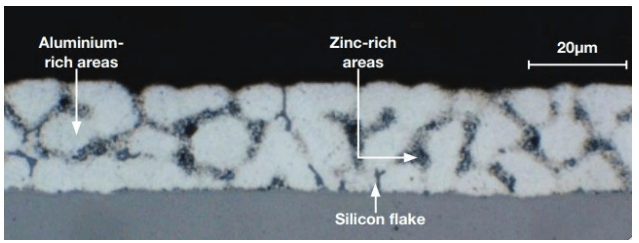
Fig. 1A: An image showing ZINCALUME® steel AZ150 (superseded)
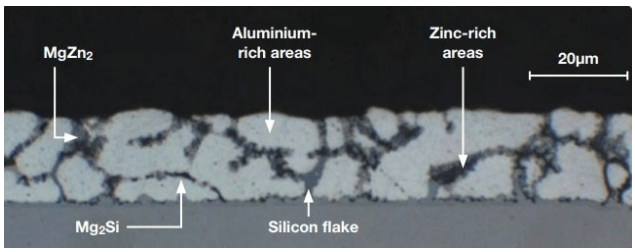
Fig. 1b: An image showing the next generation ZINCALUME® steel AM125
Take a look at figure 1b. You will see the AM alloy coating microstructure consisting of a zinc-rich matrix where the aluminum lies. You will find fine particles of magnesium silicide (Mg2Si) and magnesium zinc (MgZn2).
Most of the magnesium silicide is going towards the coating layer’s bottom part. The magnesium-zinc goes in the direction of the coating layer’s top part. Both positions of the MgZn2 and Mg2Si reinforce the AM coating’s resistance to corrosion.
https://cdn.dcs.bluescope.com.au/download/ctb-06
Corrosion Protection Mechanisms
The coating of aluminum/zinc alloy-coated steel guards the steel against corrosion. (figure1c)
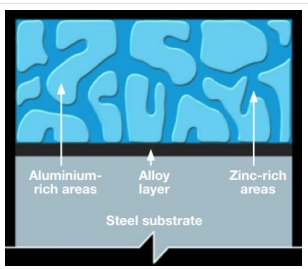
Figure 1d shows the protective mechanism of the aluminum/zinc/magnesium alloy-coated steel. The metallic coating guards the steel against corrosion. The MgZn2 that lies on top of the coating offers sacrificial protection at the start of the weathering of the steel.
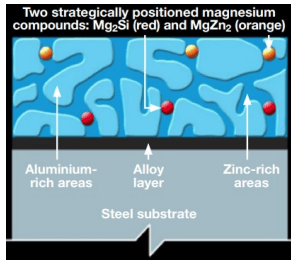
Figure 1e shows how the aluminum-rich dendrites act as a barrier against corrosion while the zinc area starts corroding. Over the years of use, the aluminum-rich areas slowly corrode when the zinc-rich region becomes exhausted, giving a limited sacrificial protection to the steel base.
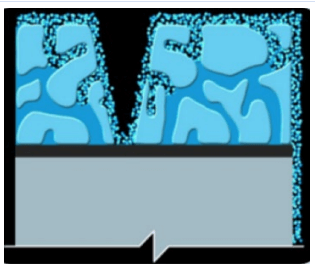
When the weathering of the coating is at its peak, Mg2Si begins to activate the aluminum-rich areas. The sacrificial protection on the steel base is not limited compared to the MgZn2. It prevents the development of red rust even in harsh environmental conditions over the years. See Figure 1f.
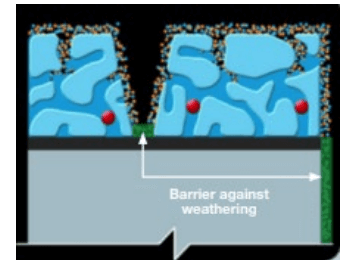
Source: https://cdn.dcs.bluescope.com.au/download/ctb-06
Cut Edges
The zinc-rich interdendritic region where there is atmospheric exposure results in corrosion at the cut edges and scratches. It is in these areas where the corrosion acts as a sacrificial protection, blocking off extreme corrosion after filling up the coating’s cavities.
AM offers resilient and long-lasting anti-corrosion properties at cut edges and scratches. The magnesium silicide particles provide extraordinary protective barriers to slow down corrosion. It blocks the corrosion gateways to the substrate.
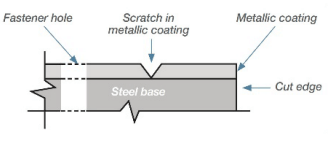
Source: https://cdn.dcs.bluescope.com.au/download/tb-10
Bends
Both Colorbond® and Zincalume® steels are manufactured as flat sheets before passing through pressing or roll forming.
The paint and coating in Colorbond steel stretch the paint and coating, which leads to cracking. AM coatings are less ductile as they are harder compared to AZ coatings. It leads to cracking in the steel’s tight bends.
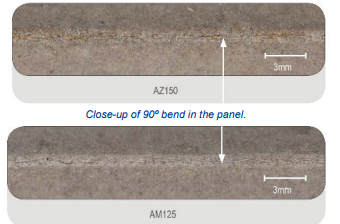
Image showing the 90-degree bend of unpainted steel exposed in marine area.
https://cdn.dcs.bluescope.com.au/download/tb-10
Conclusion
AM coatings are more resilient and long-lasting than AZ coatings. But it all depends on the application of the steel. Zincalume’s Al-Zn-Mg coatings offer barrier protection to the steel base even after several years of use.